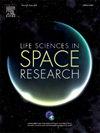在模拟微重力环境下,莫西沙星加冬虫夏草多糖可通过抗炎和免疫调节改善腹腔感染导致的肠屏障损伤。
IF 2.8
3区 生物学
Q2 ASTRONOMY & ASTROPHYSICS
引用次数: 0
摘要
背景:目前,关于微重力条件下腹部感染对肠道损伤影响的研究有限。冬虫夏草多糖(CPS)是冬虫夏草的主要活性成分,具有抗炎、抗氧化和免疫调节等多种药理作用。莫西沙星(MXF)是第四代喹诺酮类抗生素,被认为具有免疫系统激活和抑制的双重调节作用。我们的目的是研究MXF加CPS对微重力下腹部感染引起的肠屏障损伤的影响。方法:采用大鼠后肢卸荷模型模拟微重力。采用盲肠结扎穿刺法(CLP)建立腹腔感染大鼠模型。采用MXF、CPS及两药联合治疗模拟微重力环境下的clp大鼠。采用苏木精和伊红染色评价回肠组织病理学变化。透射电镜下观察大鼠肠道超微结构。Western blot检测肠屏障蛋白RegIII α/γ和MUC2的表达,免疫组化检测这些蛋白在回肠内的定位。采用细胞头阵列(CBA)检测细胞因子IL-6、TNF-α、IL-1β、IL-1α、CXCL-1、MCP-1、IL-17A、IL-18、IL-33。流式细胞术检测Treg细胞、M1巨噬细胞、M2巨噬细胞、T细胞和CD8+T细胞的百分比。结果:与正常重力组比较,模拟微重力组小鼠RegIII α/γ蛋白表达显著降低,M1巨噬细胞频率增加,TNF-α、IL-1α、MCP-1、IL-6水平升高。值得注意的是,MXF和CPS联合应用有效减轻了微重力暴露下clp大鼠的肠屏障损伤,这可以通过减轻回肠的超微结构和病理损伤,以及增加关键肠屏障蛋白MUC2和RegIII α/γ的表达来证明。此外,联合治疗提高了模拟微重力环境下脓毒症大鼠T细胞、CD8+T细胞和M2巨噬细胞的比例,同时降低了Treg细胞和M1巨噬细胞的频率。MXF加CPS也导致促炎细胞因子和趋化因子的减少,包括IL-6、TNF-α、IL-1β、IL-1α、CXCL-1、MCP-1、IL18和IL33。结论:我们的研究表明,MXF加CPS对微重力下腹部感染引起的肠屏障损伤具有保护作用,可能与其抗炎特性和免疫调节机制有关。这些发现可能为开发针对太空环境中腹部感染的药物提供见解。本文章由计算机程序翻译,如有差异,请以英文原文为准。
Moxifloxacin plus Cordyceps polysaccharide ameliorate intestinal barrier damage due to abdominal infection via anti-inflammation and immune regulation under simulated microgravity
Background
Currently, there is limited research on the impact of abdominal infection on intestinal damage under microgravity conditions. Cordyceps polysaccharide (CPS), the main active ingredient of Cordyceps, has demonstrated various pharmacological effects, including anti-inflammatory, antioxidant, and immunomodulatory properties. Moxifloxacin (MXF) is a fourth-generation quinolone antibiotic that is believed to have a dual regulatory effect on immune system activation and suppression. Our objective was to investigate the effects of MXF plus CPS on the intestinal barrier damage due to abdominal infection under microgravity.
Methods
The hindlimb unloading model in rats was employed to simulate microgravity. The rat model of abdominal infection was established by cecal ligation and puncture (CLP). MXF, CPS and the combination of the two drugs were used to treat CLP-rats in simulated microgravity. We assessed histopathological changes of ileum by hematoxylin and eosin staining. The intestinal ultrastructure was observed under transmission electron microscopy. Additionally, the expression of intestinal barrier proteins RegIII α/γ and MUC2 was detected by Western blot analysis, while the localization of these proteins within the ileum was examined using immunohistochemistry. Cytometric bead array (CBA) was employed to detect cytokine including IL-6, TNF-α, IL-1β, IL-1α, CXCL-1, MCP-1, IL-17A, IL-18, and IL-33. Flow cytometry analysis was conducted to determine the percentages of Treg cells, M1 macrophages, M2 macrophages, T cells and CD8+T cells.
Results
The results showed that compared with the normal gravity groups, the simulated microgravity groups exhibited a significant decrease in RegIII α/γ protein expression, an increase in M1 macrophage frequency, and elevated levels of TNF-α, IL-1α, MCP-1 and IL-6. Notably, the combined application of MXF and CPS effectively mitigated intestinal barrier damage in CLP-rats exposed to microgravity, as evidenced by alleviated ultrastructural and pathological impairments in ileum, along with increased expression of key intestinal barrier proteins MUC2 and RegIII α/γ. Furthermore, the combination therapy enhances the proportion of T cells, CD8+ T cells, and M2 macrophages in septic rats exposed to simulated microgravity while reducing the frequency of Treg cells and M1 macrophages. MXF plus CPS also led to a reduction of proinflammatory cytokines and chemokines, including IL-6, TNF-α, IL-1β, IL-1α, CXCL-1, MCP-1, IL18, and IL33.
Conclusion
Our study showed that MXF plus CPS exhibited a protective effect on intestinal barrier damage due to abdominal infection under microgravity, potentially attributed to its anti-inflammatory properties and immune regulatory mechanisms. These findings may provide insights into the development of drugs targeting abdominal infections in the space environment.
求助全文
通过发布文献求助,成功后即可免费获取论文全文。
去求助
来源期刊

Life Sciences in Space Research
Agricultural and Biological Sciences-Agricultural and Biological Sciences (miscellaneous)
CiteScore
5.30
自引率
8.00%
发文量
69
期刊介绍:
Life Sciences in Space Research publishes high quality original research and review articles in areas previously covered by the Life Sciences section of COSPAR''s other society journal Advances in Space Research.
Life Sciences in Space Research features an editorial team of top scientists in the space radiation field and guarantees a fast turnaround time from submission to editorial decision.
 求助内容:
求助内容: 应助结果提醒方式:
应助结果提醒方式:


